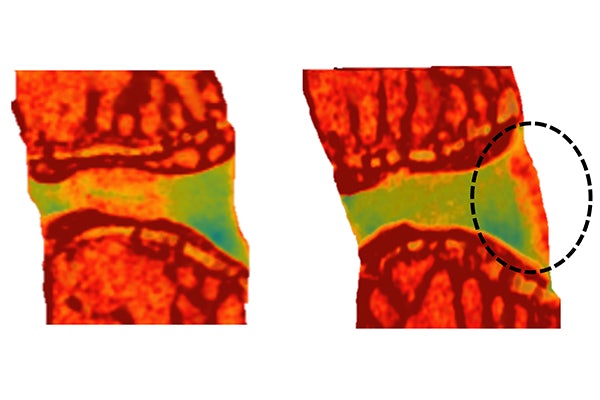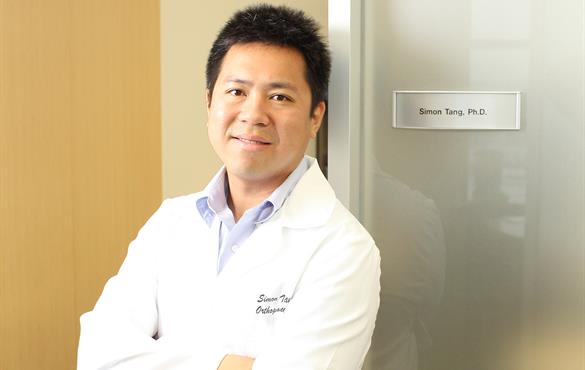WashU engineering, orthopedic team to study painful degenerative condition
An interdisciplinary WashU team can now study changes to nerve cells and cross talk between degenerating spinal discs and sensory nerves looking at changes that might cause pain

Many adults suffer from low back pain sometime in their lives, and about 40% of cases are caused by intervertebral disc degeneration (IVD), a painful and age-related condition. But physicians and researchers don't have a clear picture of what aspect of degeneration or pathology causes the pain. With new advances in imaging and modeling, researchers at Washington University in St. Louis can now study changes to the affected nerve cells and cross talk between degenerating discs and sensory nerves looking at changes that might be behind the pain.
Lori Setton, the Lucy & Stanley Lopata Distinguished Professor of Biomedical Engineering and chair of the Department of Biomedical Engineering in the McKelvey School of Engineering, along with Simon Tang, associate professor of orthopaedic surgery in the School of Medicine, plan to study molecular changes in sensory neurons in a mouse model of intervertebral disc degeneration with a five-year, $3.3 million grant from the National Institutes of Health. They will collaborate with Munish Gupta, MD, the Mildred B. Simon Distinguished Professor of Orthopaedic Surgery, professor of neurological surgery and the co-director of Pediatric and Adult Spinal Deformity Service in the Department of Orthopedics at the School of Medicine; Yu-Qing Cao, associate professor of anesthesiology at the School of Medicine; and Joe Culver, professor of radiology in the School of Medicine; of physics in Arts & Sciences, and of biomedical engineering in the McKelvey School of Engineering.
"This study is innovative because it looks at interactions between multiple organ systems," Tang said. "And it will advance our understanding of the pathology of low back pain."
Setton, Tang, and their collaborators will evaluate variations in voltage or frequency of action potential-driven calcium ions and document changes to pain-related behaviors and sensitivity over time in mice with injured intervertebral discs. Data from Setton's previous research shows that long-term degeneration contributes to irreversible changes in the neurons that explains some of the pain that develops. They will look at how the tissues cross talk to generate those long-term changes that may occur in the neurons that manifest in pain.
Currently, there are no disease-modifying therapies for low back pain, Tang said.
"If we can determine the kinetics or temporal development of pain, we know what might be our windows to intervene therapeutically," Setton said. "We hope in the future to be able to intervene with therapeutic options at the right location at the right time."





